Oligarchs triumphant and biopunks rave as Lysenko returns from the grave
Further reflections on SynbioBeta 2025
Welcome, new readers
Sundman figures it out! is an autobiographical meditation, in the spirit of Michel de Montaigne, of a 71 72 year old guy who lives with his wife in a falling-down house on a dirt road on Martha’s Vineyard that dead-ends into a nature preserve.
Incidents, preoccupations, themes and hobbyhorses appear, fade, reappear and ramify at irregular intervals. If you like this essay I suggest checking out a few from the archives. These things are all interconnected.
Précis
Last April I posted an essay, SynbioBeta Dreaming, 2025: Returning to the mecca of biodigital technpotheosis, about what I was expecting to learn and discover at SynbioBeta’s Global Synthetic Biology Conference (‘SBB 25’) in San Jose1.
I attended the conference from May 5 - 8, during which I appeared on a panel about how culture shapes science and technology (and vice versa).
Upon my return I posted a trip report, I was in the house when the house burned down: SynbioBeta 2025 — a failure of a synthetic biology conference, in which I deplored the refusal of the synthetic biology community to even acknowledge, let alone engage, what I called ‘the great wooly mammoth in the room’: MAGA’s ongoing war on science in the United States of America.
In this essay I offer further thoughts on the conference itself and on topics related to it — including oligarchically-funded vs publicly-funded scientific research, the dire wolf brouhaha, and the obligation of everyone who values truth, democracy and knowledge to speak out to preserve and defend the principles of science and free inquiry.
With George Church and a wooly mammoth on a dire flight to California
Long-time readers of Sundman figures it out! are possibly getting sick of me bringing up my complicated feelings about my relationship with George Church, a towering figure (literally and figuratively) in the field of synthetic biology. But, with apologies, I feel it incumbent to bring up this topic one more time.
The short version: I’ve known George for 15 years, have interviewed him twice, had several other quasi-professional and social interactions with him — including, when I was a firefighter, taking him 100 feet aloft in the bucket of a tower-ladder truck. And, not incidentally, Church wrote a very thoughtful and generous introduction to my novels. He & I weren’t great buddies, but were certainly friends.
But then I learned some things which really gave me pause — especially but not only Church’s ‘reputation laundering’ of Trump friend and fellow rapist Jeffrey Epstein — after which I tried to just not think about him.
But the man is closely associated with SynbioBeta (he has been the headline guest on more than one occasion), and he keeps finding himself prominently in the news. In my line of work its hard to avoid coming across his name. Most recently he’s been talked about for his involvement in a project to ‘de-extinct’ dire wolves, which was the subject of a long article in the April 14, 2025 issue of New Yorker magazine.
George Church has been talking about his dream of ‘de-extincting’ the wooly mammoth for as at least as long as I’ve known him. He’s talked about it lots of places, including on The Colbert Report.
So when I first heard about the dire wolf business, I said to myself, ‘I bet George is involved with that,’ and tried to avoid learning anything more about it. I didn’t want to know.
But while I was packing to travel to San José for SBB 25 I checked my blue sky feed. My friend Blake had sent me a note: “I suppose you’ve read in New Yorker about your buddy George and that dire wolf stuff?” Dire wolf & Church in the New Yorker? That was news to me.
I happen to subscribe to the New Yorker, the print edition. I hadn’t yet opened the issue that contained that article, but I figured this was a sign: I was going to have to read about George Church and the whole dire wolf thing. There was no point in putting it off any further. I tossed the magazine into my carry-on bag. Somewhere over western Massachusetts I opened it up and began to read.
The courageous Dr Gregory Poland shows how it’s done
In my first essay about SBB 25, I was in the house when the house burned down, I wrote:
I had hoped that the prominent scientists on stage at SBB 25 would set aside for a moment all their enthusiasm for the great breakthroughs we’ve seen over the last few years and which we anticipate in the years to come; I had hoped that the founders of exciting new synthetic biology companies would stop crowing for a few minutes about their great successes and that all these luminaries of the exciting world of synthetic biology would speak courageously from their hearts about the out-and-out war on science being conducted by the Trump regime, directed by our new Lysenko, Robert Kennedy, and by Musk’s techboi stormtroopers. But although there is a war going on, a very real war, it was only alluded to a very few times at SBB 25, and only in the very mildest, euphemistic terms.
After I posted this essay, my friend Simon, an SFIO! subscriber, sent me the following note:
This speech was delivered recently by Greg Poland at the world vaccine congress. This is the kind of speech I think you wish you had heard at the SynBio conference...
In his opening remarks (which you can hear by clicking on the image above), Dr. Poland, Chair of the World Vaccine Congress, which took place only two weeks before SBB 25, said [as edited for concision by me],
As you know, there is a moment in every great and enduring story when the protagonist reaches a crossroads—a moment when the path forward divides into two, and only two, paths which do not overlap. The stakes are high, and the weight of authority and fear presses down. We are at such a moment in vaccinology and dare not remain silent.
History will divide us—you and me—into those who spoke out and those who, by their silence, gave tacit approval. And today, I speak out as others have, knowing only that this path is one of moral responsibility and of truth.
[. . .]
[T]oday we face the great unraveling—an anti-science regression back toward a world we thought we had left behind, where vaccine-preventable diseases remain and return, fueled by misinformation, mistrust, and denial.
We now face not just disagreement about values, but disagreement and disinformation about basic facts and truth itself. The question before us is no longer what science can accomplish next, because scientific progress is meaningless if it is rejected, prevented, and punished.
[. . .]
We are at a fork in the road.
One path leads to an era of vaccine innovation, rapid response to emerging threats, renewed trust in science, promotion and protection of public health, and lives saved.
The other path leads to stagnation, to division, the continued erosion of public trust in immunization, and inevitably—as we are seeing—to illness, disability, and death.
[. . .]
We stand at a crossroads for the very soul of science itself.
For centuries, we [scientists] have been the torchbearers of human health and longevity—unraveling the mysteries of immunology and virology, preventing disease, and building a better world through reason, curiosity, and the scientific method.
But now, that torch flickers in the winds of doubt and misinformation. We cannot—and we must not—stand idly by.
As I wrote in my ‘I was in the house’ essay, when Dr. Poland made these remarks he was well aware of the price that Dr. Anthony Fauci has paid for standing up for science: vituperation, slander, doxxing, innumerable death threats against himself and his family, and much more. Dr Poland knew full well the fury of MAGA’s flying monkeys — most if not all Republicans serving in the U.S. Congress are actually flying monkeys — and in his remarks he is saying to them, Here I am.
With the help of some friends I have prepared a transcript of Dr. Poland’s complete remarks (~8 minutes). I encourage you to either listen to or read this courageous man’s address.
A tale from the Human Genome Project
James Watson and Francis Crick elucidated the double-helix structure of DNA in April, 1953. Fifty years later the Human Genome Project concluded. Wikipedia:
The Human Genome Project was an international scientific research project with the goal of determining the base pairs that make up human DNA, and of identifying, mapping and sequencing all of the genes of the human genome from both a physical and a functional standpoint. It started in 1990 and was completed in 2003. It was the world's largest collaborative biological project.
On the occasion of these two achievements, separated by fifty years, I was commissioned by Andrew Leonard, who was then the editor of the ‘Technology’ section of the online magazine Salon, to write a commemorative essay. My two-part essay (Part one: How I Decoded the Human Genome, Part Two, One Cheer for the New Eugenics) is still online at Salon; I revisited it in this SFIO! essay:
How I decoded the human genome, revisited
This post is mostly about a long (2-part) essay I wrote for Salon in 2003, called How I decoded the human genome, which was about implications of humankind’s ever-increasing understanding of the workings of DNA and our ever-increasing mastery of genetic engineering. But by way of introduction I would like to offer a few observations on this
I’d like to draw your attention to this excerpt from of my essay
Three years ago, the privately held company Celera appeared on the verge of beating the combined scientific teams of the rest of the world to the goal of sequencing the human genome. Celera's approach was less rigorous but faster than the Human Genome Project's approach, and for a very understandable reason: Celera's goal was not to advance science but to win the race by any means fair or foul and thereby claim what would have been the most astonishing conquistadorial prize in human history. For had Celera won the race to sequence the genome, and had it filed patents aggressively, it is conceivable that one tiny company could have laid claim to royalties on virtually all medical progress thenceforward. Nay, they could have claimed proprietary interest in the evolutionary future of the human race.
Never mind that the proposition was more ludicrous, on the face of it, than a private company's laying claim to the moon. The threat was real, and scientists were scared.
This state of affairs was remedied by the heroic efforts of a once obscure University of California at Santa Cruz biology graduate student named Jim Kent, who, over the course of 40 days of coding so furiously that he literally had to soak his wrists in ice baths every night, wrote a program to assemble and make public the Human Genome Project's own map. He completed the task one day ahead of Celera.
Kent's stealth attack thereby beat Celera at its own game virtually single-handedly, in a feat that deserves to become as iconic as Watson and Crick's.
[Kent’s spectacular rescue of the human genome from the grasping hands of capitalism embodied in biologist/entrepreneur Craig Venter’s Celera is explained in greater detail in Victor McElheny’s great book Drawing the Map of Life: Inside the Human Genome Project. You should look it up. It’s important.]
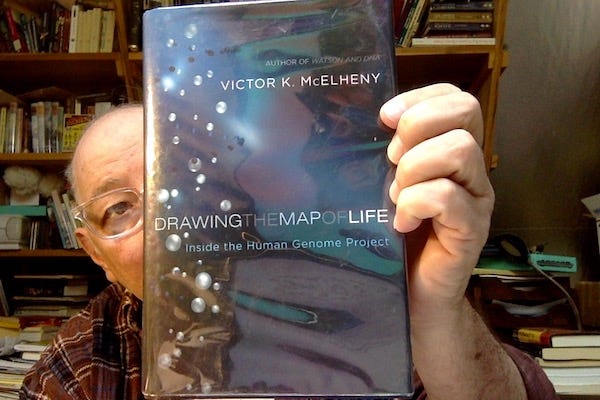
In the course of the researching my essay for Salon I spent more than an hour talking with Kent in a hotel bar, and I devoted a good chunk of How I decoded the human genome to it. We talked a lot about corporate vs public science.
Reprogramming life
The most exciting presentation I caught at SBB 25 was given by Professor Jason Chen, founder and Chief Science Officer of the startup Constructive Bio. His talk on building genomes from scratch and programming RNA to build molecules from amino acids which are not available in nature — because DNA lacks the ability to code for them was — well to me, a non-scientist, it was just astounding. Beyond astounding. Breathtaking.
From a Constructive Bio pamphlet that I got at SBB 25:
To incorporate non-canonical monomers into a peptide or protein, we need to harness the ribosome to interpret the genetic code in a different way.
This mind-boggling feat — essentially inventing an entirely new genetic code — is an idea that I first heard from George Church when I interviewed him in his Boston laboratory in 2008. I’m not going to try to explain it in any greater detail here; if you’re interested there’s plenty of great material on the Constructive.bio website.
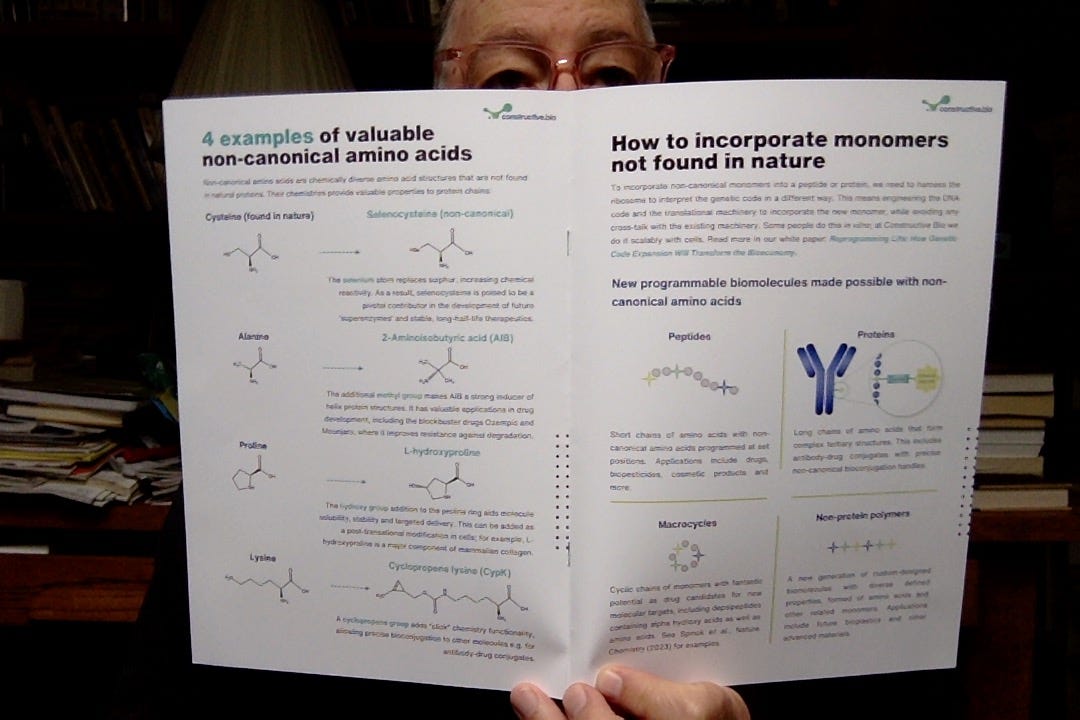
The implications of this development are. . .
Forget it. I have no idea what the implications are. I just have a feeling that they’re going to be very, very, very big.
At the conclusion of Professor Chen’s talk, John Cumbers — SynbioBeta’s founder and head honcho — came on stage. As he did, an image of a large building surrounded by green fields appeared on the screen behind him. It was a picture, Cumbers explained, of a brand-spanking new construcitve.bio facility being built in England. Financed, said Cumbers, by Larry Ellison. “Next year I’m hoping to get Larry Ellison up here on the SynbioBeta main stage.”
Good Christ, Larry Ellison, I whispered to myself. Larry Fucking Ellison. We are so fucking fucked.2
A few comments from the peanut gallery
On the second day of SBB 25 a friend I had never met in person — a molecular biologist working for a Silicon Valley startup — drove down from San Carlos & we went to dinner.
This friend — I’ll call him 'Michael’ — had attended SynbioBeta conferences in the early days, when SBBs had a more academic, less corporate, even a bit biohacky vibe. But now Michael found himself priced out. Since my own SBB 25 admission fee had been comp’d, I didn’t know what the price of a ticket was, and was astounded when he showed me on his phone: $2500.
For the next couple of hours Michael & I talked about science, and the current vibe in Silicon Valley, and about my dismay that nobody on the main stage at SBB 25 had yet said anything about the Trump administration’s war on science.
“They’re afraid to say anything,” Michael said. “It’s about the money.”
Then he told me about a biopunk ‘unconference’ (and rave) that had taken place in San Francisco the weekend before SBB 25 happened in San José. It reminded me of the ‘biohacker village’ at the annual DEF CON hacker conclave that takes place in Las Vegas every summer.3
The Biopunk (un)conference makes it pretty clear what they think of the whole SBB 25 world:
Biotech is f*cked.
We've decided to change that. To lower the barrier to entry for people who actively want to change the system.
When the largest gathering of synthetic biologists costs $2500 to attend, that's gatekeeping. We're offering a gathering at 1/10th the cost that'll be a lot more fun.
While traditional biotechnology requires years of jumping through stupid hurdles to get a PhD, we want to celebrate autodidacts and experimentalists getting creative at the fringe to get sh*t done faster.
No more startup pitches hyping up vaporware wooly mice. We're showcasing the real ones discussing problems at the edge of the possible doing brave, ongoing work while carrying a pipette-in-hand.
No more talking heads on stage. We want attendees to be involved, not impressed, having conversations on how to change the systems we operate in.
In a follow-up note a little while after SBB 25 had concluded, Michael said in an email to me,
Although I believe in the spirit of this [biopunk (un)conference] event, note that it has been sponsored by AthenaDAO, a crypto+feminist "f/acc" ("fertility accelerationist"???) organization which I'm sure could result in its own entire newsletter series of the infiltration of venture capital/crypto hype into "hacking" spaces.
Later, in a comment on my ‘I was in the house’ report on SBB 25, Sung won Lim — who I know from biohacker gatherings long ago — wrote (lightly edited by me):
Sometimes I wonder where the human imagination side of communities like SBB stem from.
Maybe our age's collective imagination is still fixated on bringing back 1964 New York World's Fair, and is still haunted by the battles of that age. Apparently behind the stereotypical gleaming futurism was a pretty wild tug of war between newly emergent corporate powers and the US government.
For people raised on diet of David and Goliath stories of scrappy entrepreneurs vs lumbering special interest (the US government), the current dismantling of the post-WWII scientific establishment in favor of venture capital and private equity might not be a 'bad thing.'
Catching up with the Dire Wolf over Kansas
The title of that story in the New Yorker, by D.T. Max, is The Dire Wolf Is Back.
Which, we haven’t even gotten to the body of the text and already we’ve got two problems: (one) the two animals to be discussed in the piece are not, in fact, dire wolves; they’re grey wolves with a bunch of dire wolf genes spliced in; AND (two) as Max makes clear in their story, once the two lab-created animals expire, their mutant species, whatever you call it, will be extinct (again). The dire wolf is not back.
From the dubious title the article continues in an informed but rather gushy way:
Ben Lamm is a forty-three-year-old serial entrepreneur who has already had five “exits”—acquisitions of startups by other companies. He lives in Dallas; his estimated net worth is $3.7 billion. [. . .] Today, he listens to a lot of podcasts devoted to bold new ideas. Among the interesting figures he has run across is George Church [. . .][a] seventy-year-old with a long white beard and twinkling, wouldn’t-it-be-fun-to-try-that eyes. . .
Evidently this isn’t the William Shawn New Yorker I grew up with — thank you, Tina Brown — but fine, whatever.
Max does a reasonable job of describing how the billionaire Lamm, together with Church, founded Colossal Biosciences with the aim of developing the technology for ‘de-extincting’ species —technology that will presumably have other very lucrative applications — and does fine job describing team of genetic engineers, and others, that Lamm recruited. Max explains the bioengineering challenges to a ‘intelligent non-scientist’ level of detail and discusses objections to the dire wolf project on various ethical and other grounds, and how Lamm responds to them. That’s all well and good. But at the core of the story are the entangled questions of money and who gets to control science.
From the story:
I asked Lamm whether Tom Chi, one of Colossal’s first investors and a venture capitalist known for his environmental awareness, was putting his money in to help save the planet. “He did not invest in us for fun,” Lamm said. “He invested in us because he thinks this company could be dual purpose—where it has a positive ecological benefit but it makes a fuck ton of money.”
The story goes on to talk about the ‘de-extinction’ project, the two cute animals (‘Romulus’ and ‘Remus’) that resulted from it, the broader implications for science and society of the techniques developed by Colossal Bioscience to produce these so-called dire wolves, and so on. It’s a pretty good article. I learned a lot about the actual science involved.
But here’s the one bit that really jumped out at me:
Lamm remembers Church telling him that the tech investor Peter Thiel had donated to his lab, providing “a budget of a hundred.” Lamm was used to big money—“I’m not a scarcity guy, I’m an abundance guy,” he told me—but he was daunted. Fuck, I guess I could raise a hundred million dollars for this, too, he recalls thinking. Church then clarified that Thiel had spent only a hundred thousand dollars on the project.
Peter Fucking Thiel. Longtime readers of Sundman figures it out! may remember my essays I created Peter Thiel, who gave us JD Vance. Sorry about that, and Peter Thiel’s Game of Thrones, which are among two of my most popular essays ever.
To call the billionaire Peter Thiel a neo-Nazi, democracy-hating, ghoulish eugenic crackpot-religious-fanatic motherfucker is to insult neo-Nazi, democracy-hating, ghoulish eugenic religious- fanatic motherfuckers everywhere. He’s that bad.
I was profoundly disheartened when I learned that my friend George Church had taken money from Jeffery Epstein. He apologized for that, said he’d learned his lesson. And now here he is boasting about taking money from Peter Thiel. Peter Thiel! The very man who gave us JD Vance and Robert Kennedy, our new Lysenko. Peter Thiel, a fucking commanding general in MAGA’s war on science. That’s what I call dire.
dire /dīr/
adjective
Warning of or having dreadful or terrible consequences; calamitous.
"a dire economic forecast; dire threats."
Urgent; desperate.
"in dire need; dire poverty."
Ill-boding; portentous.
"dire omens"
Similar: ill-boding portentous
The American Heritage® Dictionary of the English Language, 5th Edition • More at Wordnik
A fork in the road
Not so very long ago — let’s say, 2016, the year that the legendary DEF CON hacker’s convention began to incorporate biohacking into their purview, the model of scientific research — biological research in particular —in the (world-leading) United States looked something like this:
On one end of the spectrum you had private research laboratories owned and operated by large corporations exploring proprietary methods and technologies to exploit and monetize;
On the opposite end you had democratic, anarchic, open-source biohacker-biopunks working in small laboratories, labs often small enough to fit into a garage or basement, sharing materials, ideas, techniques, via a kind of samizdat;
And in the vast, oceanic middle you had universities and semi-private, nonprofit research institutions (the Mayo Clinic, where Dr. Greg Poland’s laboratory is located, for just one example), largely funded by taxpayer dollars via grants from the National Science Foundation, National Institutes of Health and so on.
In this great middle area between the capitalists and the anarchists, college undergraduates and graduate students began their long arduous formation into real scientists. Colleagues collaborated across institutional borders — and national boundaries — advancing knowledge for the common good. New ideas were explored, and, when their promise became real, released into the private sector where the marketplace could do its thing.
This infrastructure, built up over the last 70 or 75 years, is one of the great accomplishments of humankind.
It is precisely this rich, abundant, public, democratic middle that Trumpist Silicon Valley oligarchs like Peter Thiel, Larry Ellison, Ben Lamm and their ilk aim to destroy. (They can’t be bothered with the ‘autodidacts’ of the biopunk movement; they’re probably even happy to keep biopunks around as gadflies, like 1984’s Emmanuel Goldstein.)
The future these private-laboratory-owning billionaires and centibillionaires envisage, and I wish to God that I were joking, is one in which they preside, like James Bond villains, over private feudal fiefdoms, protected by private mercenaries, living lives extended to hundreds of years by their private scientific research while the rest of us — you and I, either cease to exist or exist as techno-serfs.
So I implore you. Consider the story from the Human Project, when the efforts of one software-engineer-turned biologist prevented the entire human genome falling into the hands of the proto Silicon Valley bio-venture-capitalist Craig Venter. That was scary enough, but the stakes are vastly greater today.
Read the words of Greg Poland and Jim Kent. Take them to heart. Speak up. In the words of Dr. Poland,
Together—and I stress together—we can turn the tide. Together we can stand for truth. Stand up and speak up and show the world what science can do. Insist on truth, on morality, on equity, and on moral coherence. Your future—your children and grandchildren—and countless others are depending on what we do now, and how we respond.
Colleagues, let us be counted on the right side of history.
A request
Friends, unlike the George Churches, and Ben Lamms, Larry Ellisons and Peter Thiels of world, I’m just a poor writer who’s trying, and not always succeeding, to make enough dough to pay his mortgage & car payments on time. If you enjoy my kind of reporting and would like to help out, please consider upgrading to a paid subscription. If you’d just like to make a one time-contribution, here’s a link to buy me a coffee (any amount welcome — pay no attention to the exorbitant suggestions).
Cheerio!
The ‘Global’ conference in San Jose this year was the 6th SynbioBeta event I’ve attended: 4 in San Francisco, and one in Edinburgh, Scotland. I’ve been a panelist (on science and science fiction), an invited speaker (‘Art, ethics and Synthetic Biology’), and a seller of my self-published novels in hallways adjacent to the exhibit hall.
Many people who’ve read my 1999 novel Acts of the Apostles, about an evil-genius Silicon Valley billionaire and would-be messiah out to rule the world have speculated who the model was for the uber- villain Monty Meekman. Those who’ve guessed Larry Ellison were not far off the mark.
I’ve been to DEF CON a few times, renting a table in the vendor room to sell my books. I even gave a talk at the first-ever Biohacker Village.

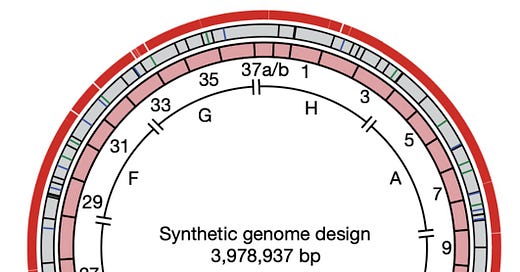


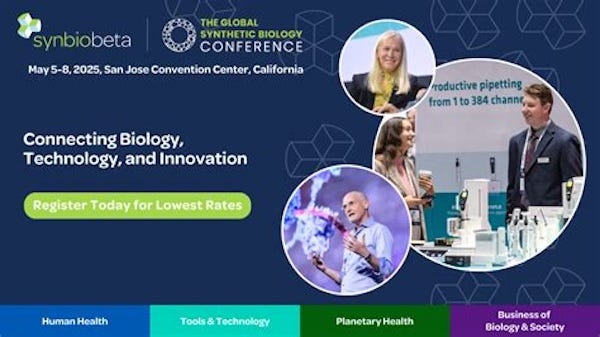

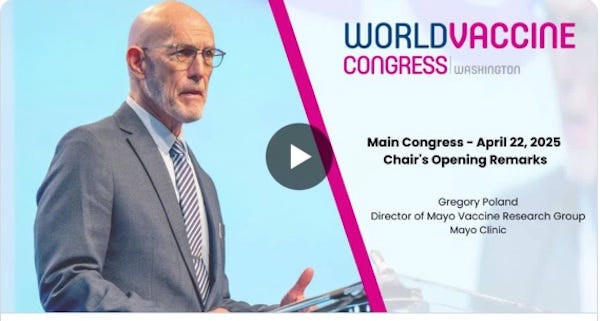
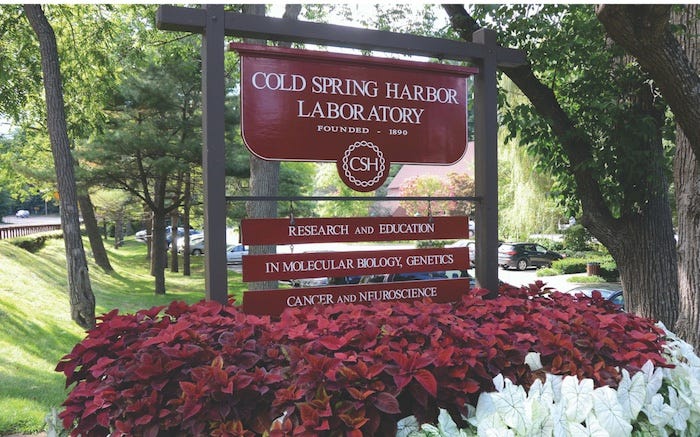

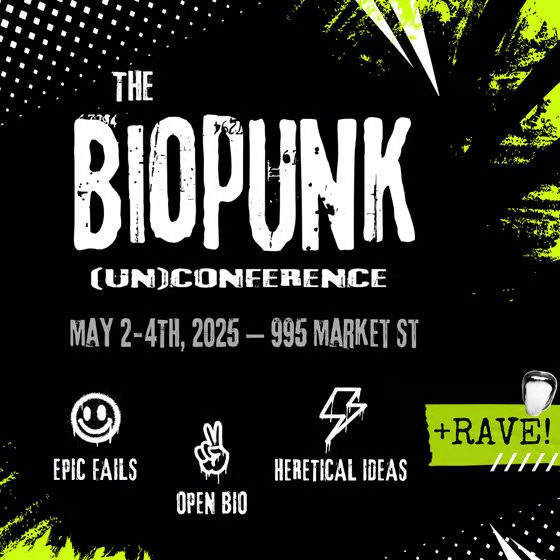

John, your best piece of writing yet. It scared the heck out of me.
Another great read, thank you!
Finally finding the time to catch up on your article - this humble warehouse worker - independent researcher is currently on an Amtrak to LA to present our findings at ASM 2025. I felt this was an interesting dichotomy in light of your thoughts on where synbio community is going & outsider research.
I have to say, as someone deeply interested and invested in concept of public sharing and contribution to the sciences, I still remain deeply skeptical of the biohacking community. The ones I had a chance to talk to didn't really seem to believe in building up a communal body of knowledge and effective training/education for all. Maybe I should give it a chance at the unconference next year - hopefully there are some biohackers who feel contributing to public repository of knowledge is as meaningful as introducing new products.
Also, thank you for linking to your older writeup and mentioning Jim Kent's work. Looking forward to learning more about this one.